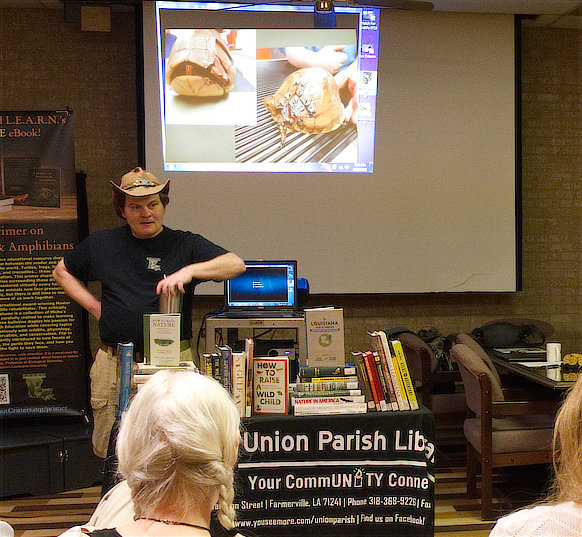|
7/30/2020 0 Comments LMNA Coffee TableTransmission Risks: How Wearing Masks & Distancing Counts in The Fight Against Corona VirusNB: Now two masks are recommended and are thought to be 90% effective! Distance and ventilation is key to reducing risk! I think we probably all have some family members and friends who worry us by not heeding the Governor's instructions about wearing masks and keeping, not mixing with other households and staying at least six feet clear of each other. A Decade After Deepwater Horizon How is Gulf Wildlife Faring? BP’s Penalties Funding Largest Ecosystem Restoration Effort in U.S. History.Poster child for deadly oil spills, The Deepwater Horizon disaster still resonates today. Eleven people lost their lives, and an estimated 200,000,000 gallons of crude oil were leaked into the Gulf of Mexico over an agonizing period of 87 days. The shores of the Gulf of Mexico have suffered hurricanes, systemic erosion and submersion of marshes from canals, deforestation of the protective chenieres, invasive Nutria rats and pollution. America’s lost 2000 square miles of Gulf coastal land over the past 90 years. Could this next decade herald better times for the Gulf coast, it’s wildlife and the people who depend upon a healthier environment? A new report by The National Wildlife Federation summarizes the latest information available about ten wildlife species that were affected by the “ecosystem-level injury to the northern Gulf of Mexico,” as well as the restoration efforts underway — what constitutes the largest ecosystem restoration effort in U.S. History! The Spice of Life: The Lowly Roly-Poly
Can you spare $8 trillion? How Investments In Tropical Forest Protection and Curbing Wildlife Trade Can Pay-off In Zoonotic Disease PreventionHIV, H5N1, Nipah, Ebola, Marburg, SARS, MERS and COVID-19 are all zoonotic diseases transmitted from wildlife to people, most have proved expensive in economic and personal terms, and while the filoviruses may be an ancient evil and the Coronavirus 19 a very new one, they all share the underlying cause of unusual proximity between people and wildlife. Habitat destruction and human incursion are common factors. If you've been wondering whether environmental conservation makes economic sense, here is an interesting article from Science Magazine's Policy Forum that shows not only that it does, but how it does, and that we may simply no longer be able to discount the value of environmental destruction in the big balance sheet of modern human civilization. The mathematics at a glance: US $17.7-26.9 billion can be invested to prevent tropical deforestation and limit wildlife trade, to yield savings of US $8.1-15.8 trillion worth of damage. Maps From Space! The Dataset: Global map of the Biodiversity Intactness Index, from Newbold et al. (2016) Science. Download from UK Natural History Museum Data Portal. UK Natural History Museum Data Portal Data usage licence: CC BY 4.0 The Dataset: Global map of the Biodiversity Intactness Index, from Newbold et al. (2016) Science. Download from UK Natural History Museum Data Portal. UK Natural History Museum Data Portal Data usage licence: CC BY 4.0 Want to make a spatial map of the world or your own favorite bits? We can now, thanks to the UN's online Biodiversity Lab and the technical wizards at NASA. I made the map on the left that shows The Biodiversity Intactness Index (2016) which is the modeled average abundance of originally present species in a grid cell, as a percentage, relative to their abundance in an intact ecosystem. Pretty cool, huh? There are up to 115 global data layers for research use in both terrestrial and marine mapping. Find out more about this amazing Global Information System and the free course that trains us in its use.
0 Comments
Leave a Reply. |
LMNA News BlogWelcome to the Louisiana Master Naturalist Association News Blog. Archives
April 2024
Categories |
Search by typing & pressing enter

 RSS Feed
RSS Feed



